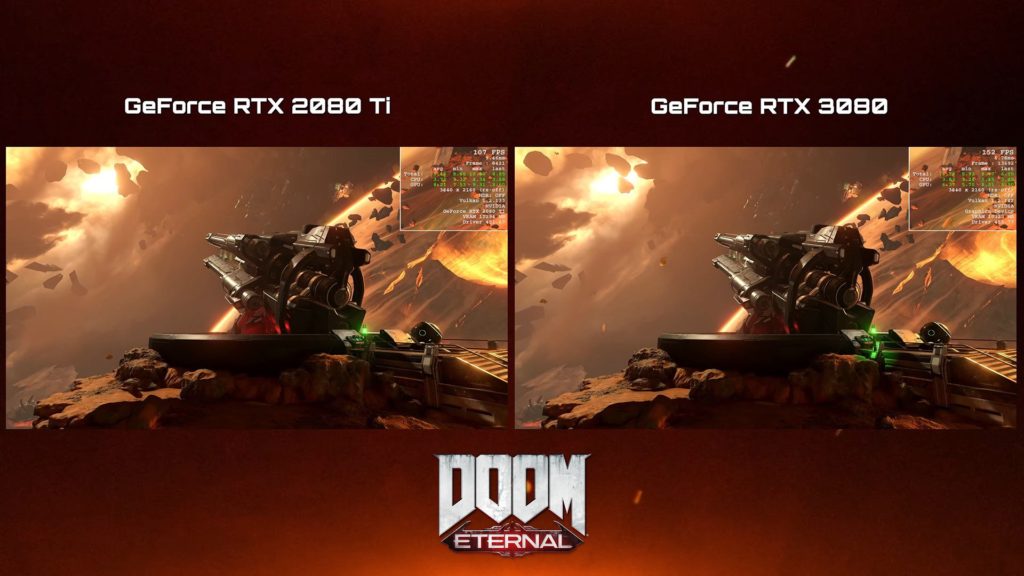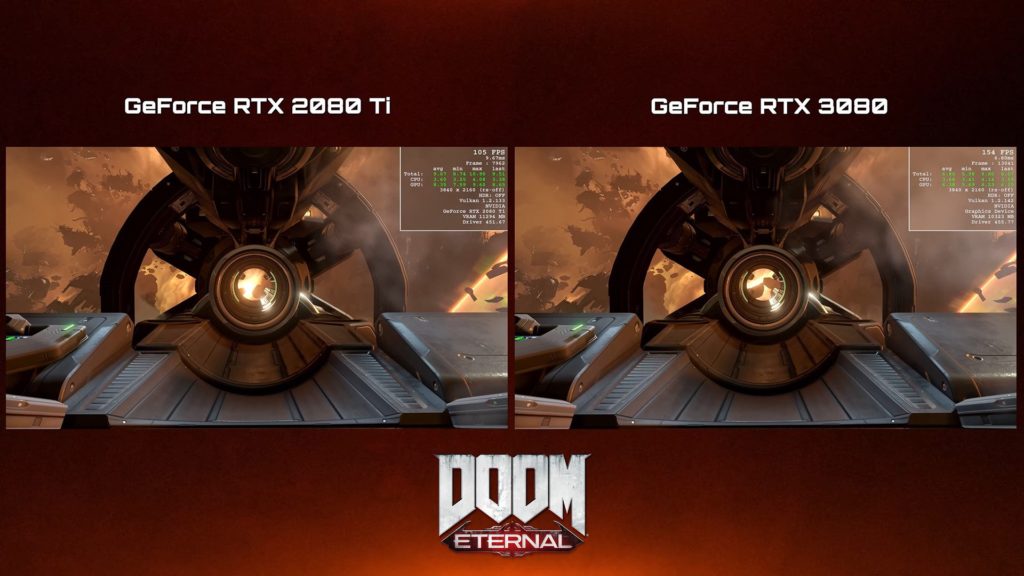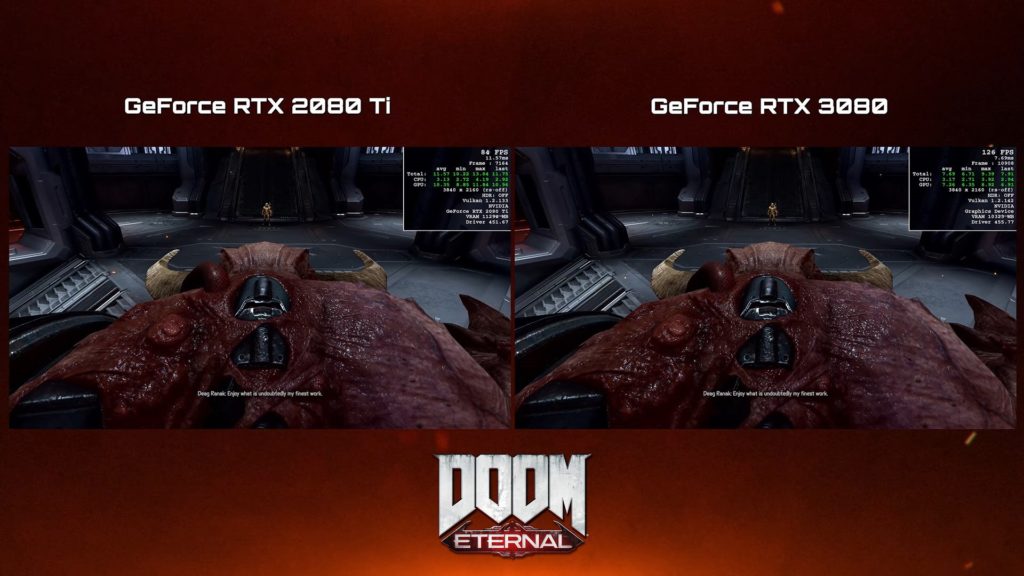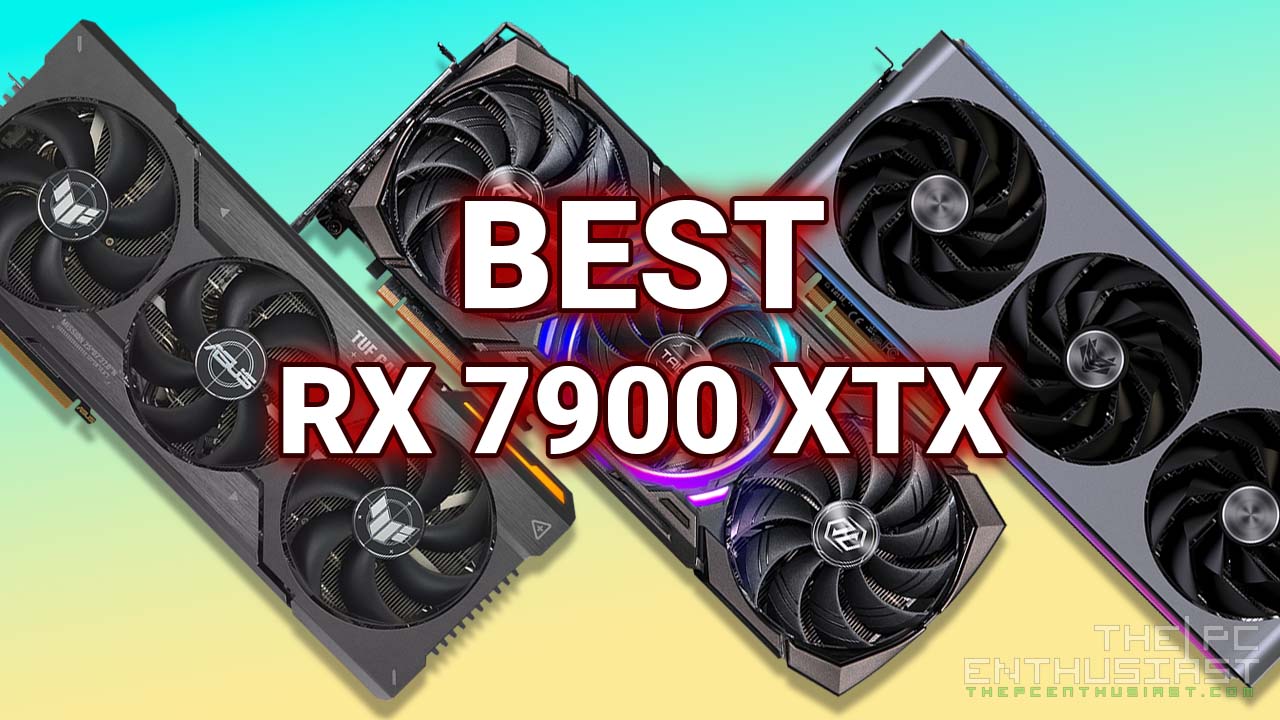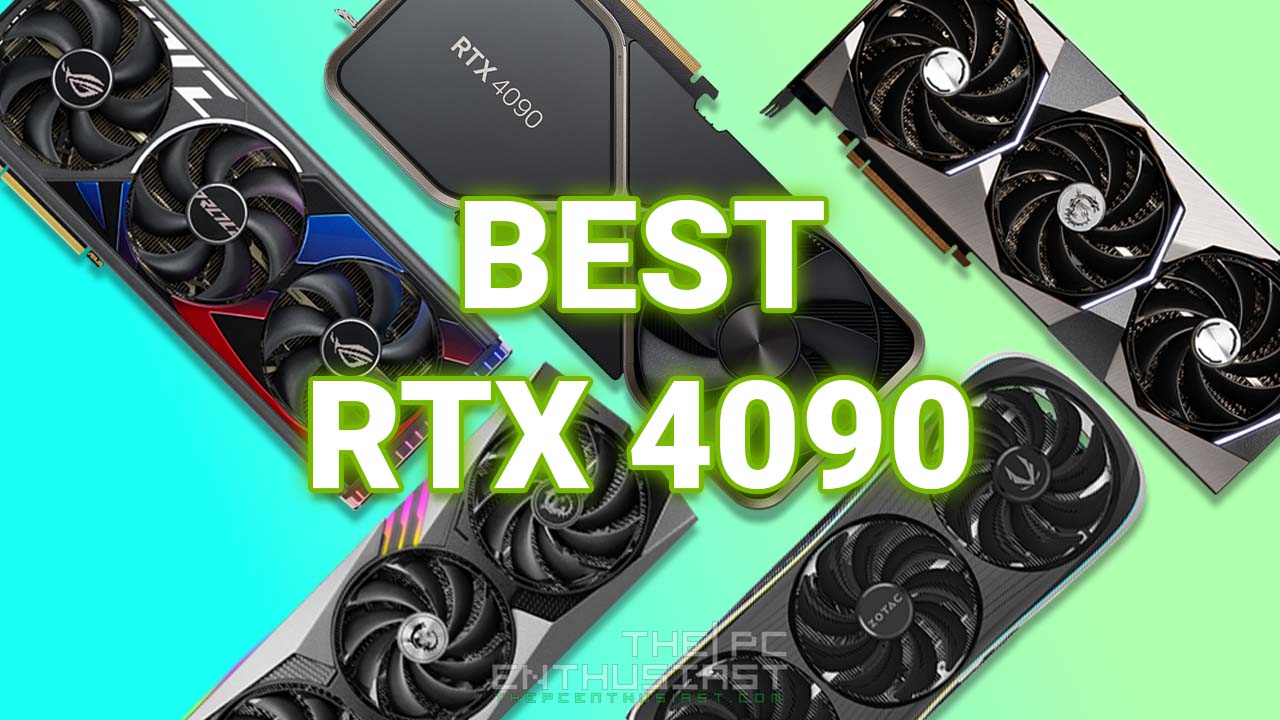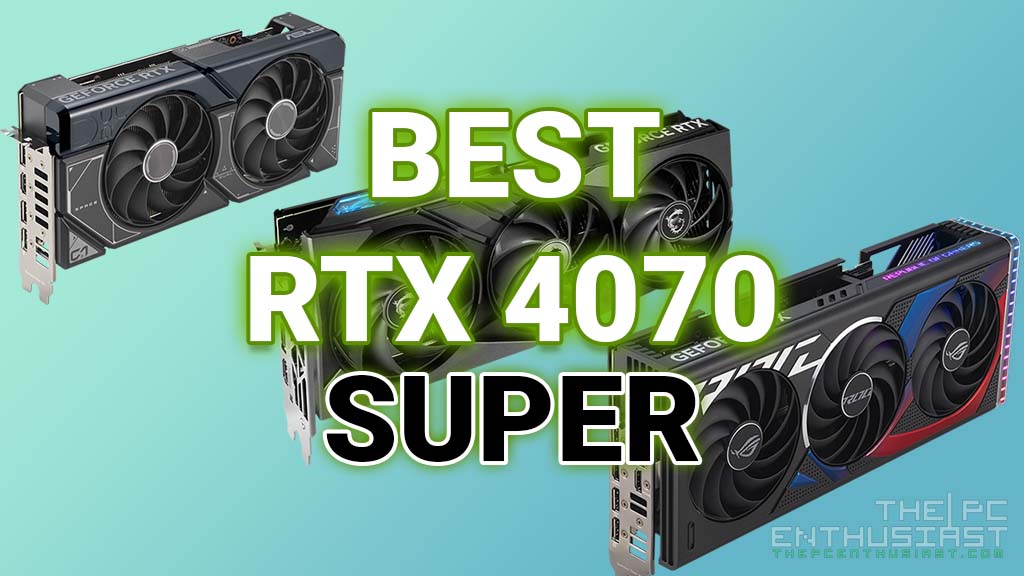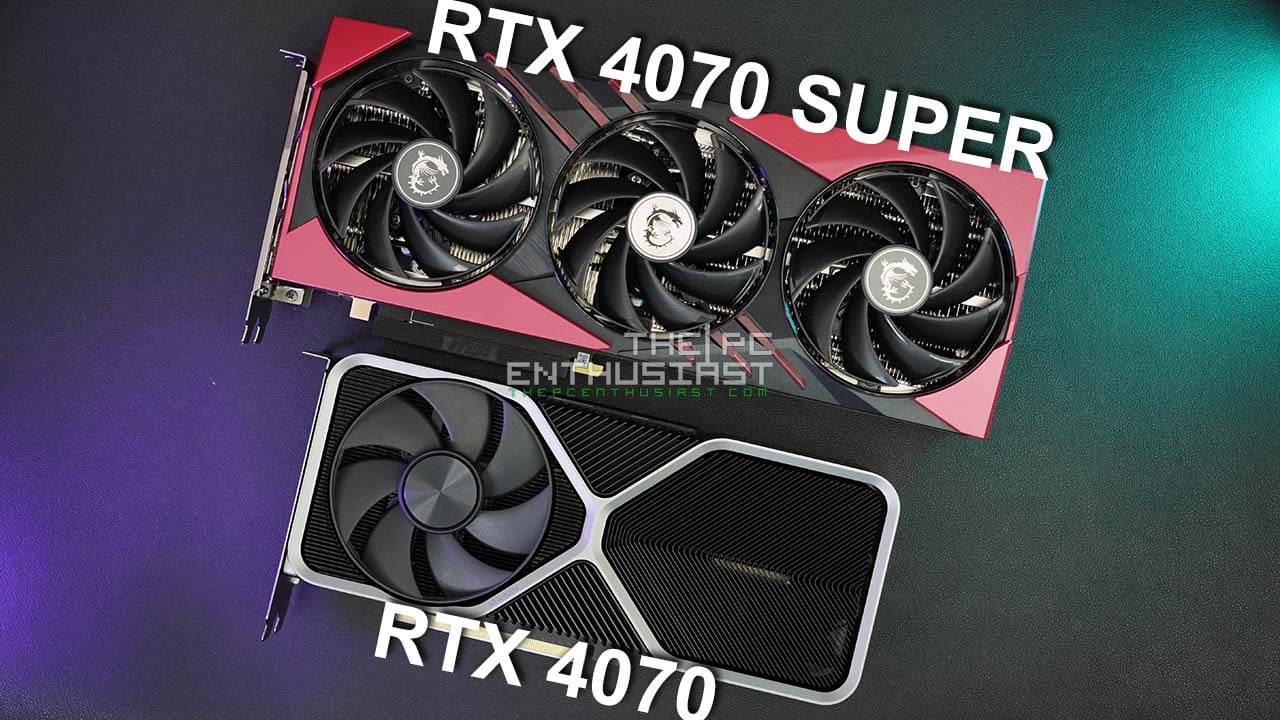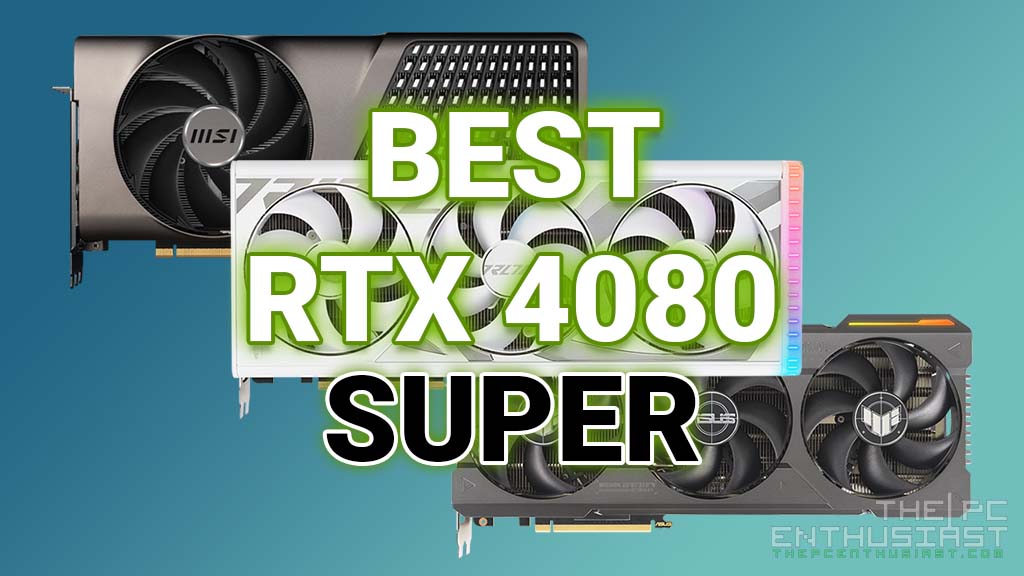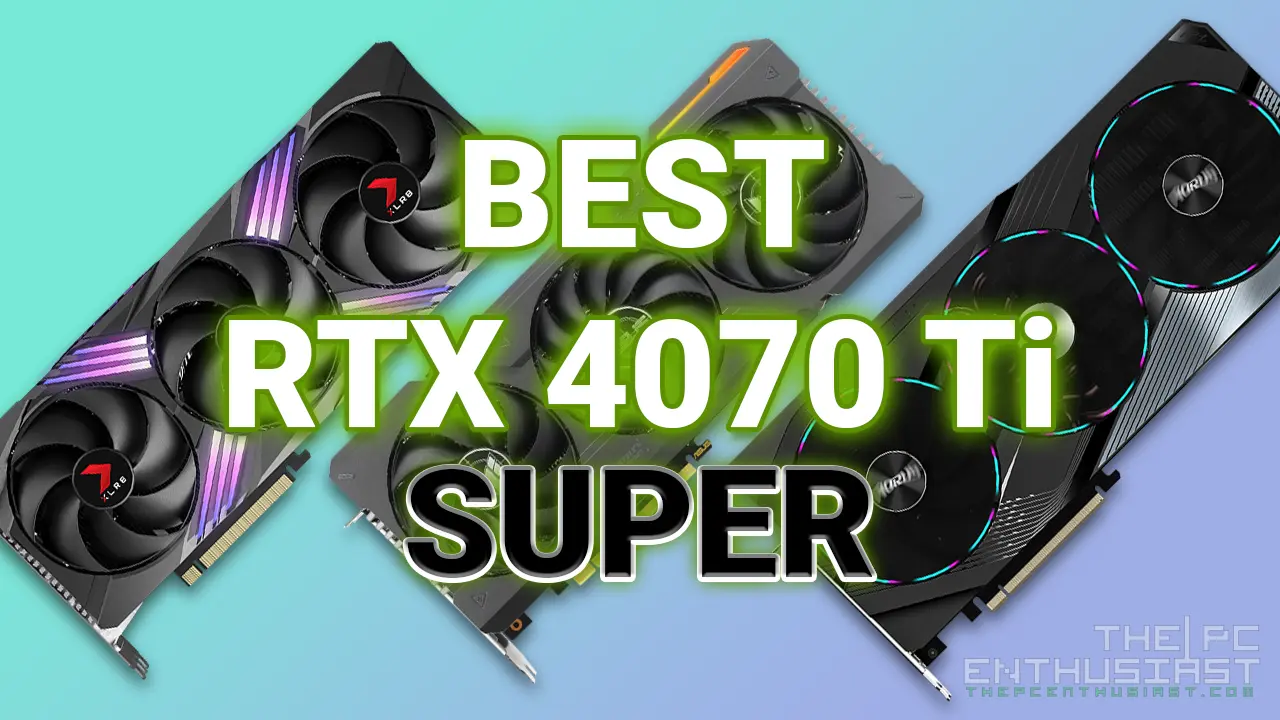Right now, those who already got their hands on the latest and greatest RTX 3090 and RTX 3080 might be thinking of leaking some performance benchmarks. Well, NVIDIA says hold my beer to that, as they recently uploaded a video comparing the real-world performance of the RTX 3080 vs RTX 2080 Ti in Doom Eternal on 4K UHD resolution. Watch the video below.
UPDATE: GeForce RTX 3080 Graphics Cards available on Newegg.com here, B&H Photo here
GeForce RTX 3080 vs RTX 2080 Ti in Doom Eternal in 4K Gameplay
As you can see from the video below, the GeForce RTX 3080 easily beats the RTX 2080 Ti in Doom Eternal on 4K UHD resolution. While there is no average FPS shown, we can see that the RTX 3080 is hovering around 120FPS to 140FPS depending on the area or scenario.
On the side by side comparison between the RTX 2080 Ti vs RTX 3080, we can also see that there is around 40fps to 50fps difference between the two graphics cards. Of course, the RTX 3080 is the faster card between the two. Just a rough estimate, on Doom Eternal alone, the RTX 3080 could be around 30% to 40% faster than the RTX 2080 Ti.
It wasn’t mentioned in the video what CPU was used or the system’s specs. But the benchmark was running at 3840×2160, maximum settings, HDR off, running at Vulkan, and using NVIDIA driver version 455.77. And this is where I started to scratch my head.
Different Vulkan and NVIDIA Driver Versions Used, Why?
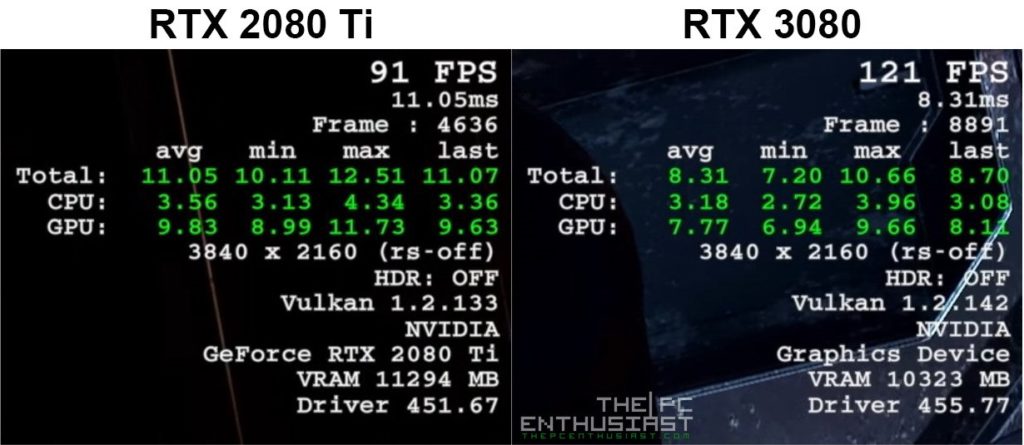
Since many of you might be focused on the FPS counter, you might have missed that the driver version and the Vulkan version are different. I noticed that NVIDIA used Vulkan 1.2.142 and NVIDIA 455.77 driver version for the RTX 3080. Meanwhile, the RTX 2080 Ti was running on Vulkan 1.2.133 and NVIDIA driver version 451.67.
That doesn’t seem like an apples to apples comparison. Perhaps they used a different system for the RTX 3080 and a different system for the RTX 2080 Ti? I’m not sure if there’s a significant impact on the results as well. So, I’m taking this gameplay benchmark with a tiny bit of a grain of salt then.
What do you think?
The GeForce RTX 3080 Is The Graphics Card For 4K Gaming
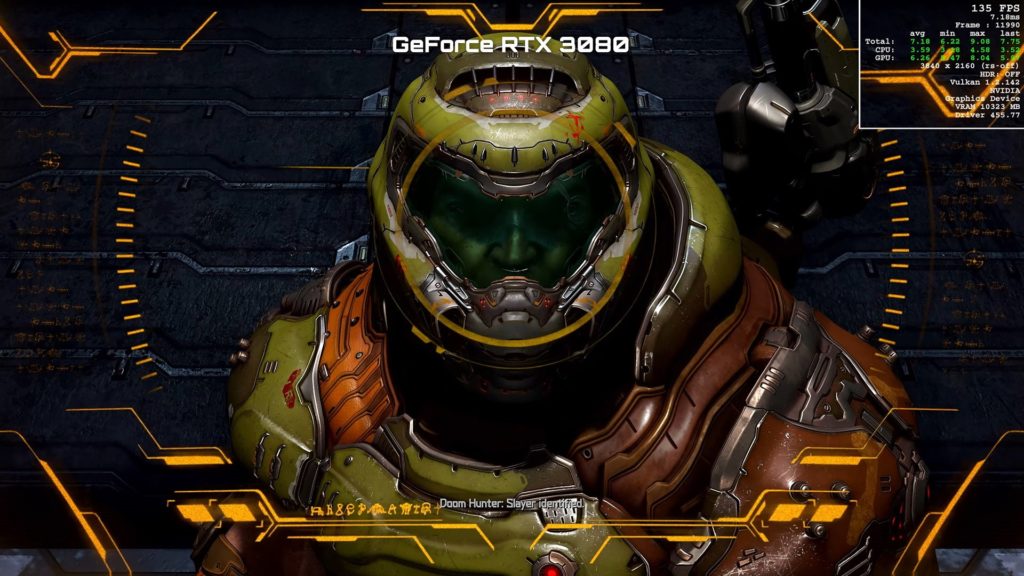
Despite the differences in Vulkan and driver version used, we just saw that the RTX 3080 is more than capable of pushing above 60fps on a 4K monitor even with Doom Eternal’s maximum settings.
So, if you plan to get an RTX 3080 and you are still on a 1080p monitor, I think it’s best to upgrade your monitor to at the very least a high refresh rate 1440p monitor or 1440p ultra-wide monitor.
It looks like that a 4K high refresh rate monitor is the ideal monitor to be paired with the RTX 3080 and RTX 3090. There are a lot of really good high refresh rate ultra-wide monitors and 4K 120Hz or 4K 144Hz monitors out there today. I’ll write a separate article for this since it’s a lot to cover.
If RTX 3070 is ≥ RTX 2080 Ti, then…
When NVIDIA’s CEO Jensen Huang revealed the RTX 3070, it was mentioned that the RTX 3070 is “faster” than the RTX 2080 Ti. Right now we don’t know yet if it’s overall faster than the RTX 2080 Ti or it depends on the game or scenario. It could be “faster” or “equal to” and perhaps a bit slower than the RTX 2080 Ti depending on the game.
But let’s just say that the RTX 3070 is faster than or equal to the RTX 2080 Ti. Based on the RTX 3080 vs RTX 2080 Ti gameplay above, the RTX 3080 could be around 30% faster than the RTX 3070, give or take. That’s just a rough estimate, and I’m sure it will vary depending on the game and/or scenario.
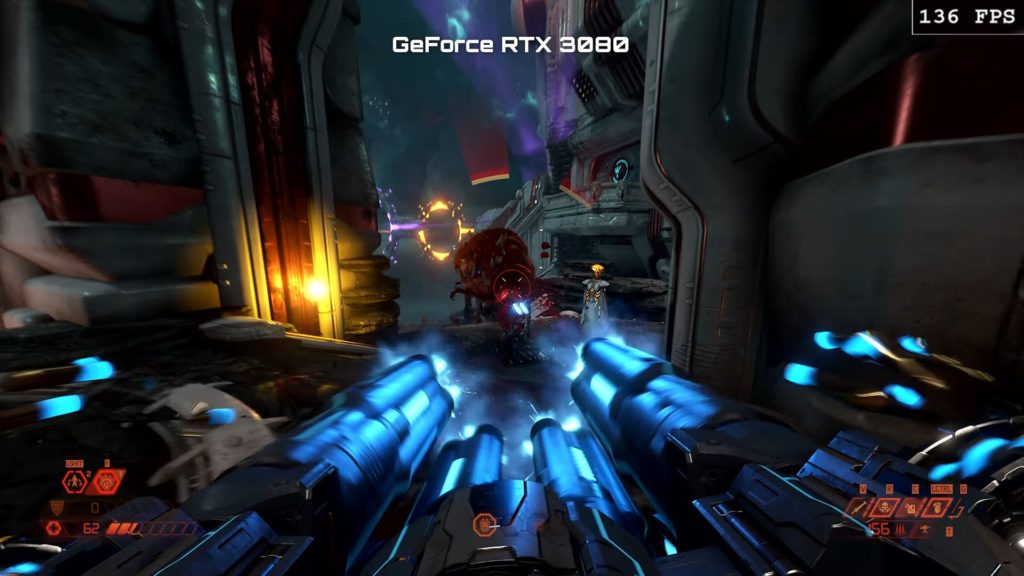
NVIDIA GeForce RTX 30 Series Features
Below are the “cutting-edge” technologies that the new RTX 30 Series GPUs and NVIDIA Ampere architecture have to offer:
- New streaming multiprocessors: The building block for the world’s fastest, most efficient GPU, delivering 2x the FP32 throughput of the previous generation, and 30 Shader-TFLOPS of processing power.
- Second-gen RT Cores: New dedicated RT Cores deliver 2x the throughput of the previous generation, plus concurrent ray tracing and shading and compute, with 58 RT-TFLOPS of processing power.
- Third-gen Tensor Cores: New dedicated Tensor Cores, with up to 2x the throughput of the previous generation, making it faster and more efficient to run AI-powered technologies, like NVIDIA DLSS, and 238 Tensor-TFLOPS of processing power.
- NVIDIA RTX IO: Enables rapid GPU-based loading and game asset decompression, accelerating input/output performance by up to 100x compared with hard drives and traditional storage APIs. In conjunction with Microsoft’s new DirectStorage for Windows API,(1) RTX IO offloads dozens of CPU cores’ worth of work to the RTX GPU, improving frame rates and enabling near-instantaneous game loading.
- NVIDIA Broadcast for AI-powered Video and Voice: Turn any room into a home studio with AI-taking your livestreams and video chats to the next level with AI-powered audio and video effects like noise removal, virtual background, and webcam auto frame.
- World’s fastest graphics memory: NVIDIA has worked with Micron to create the world’s fastest discrete graphics memory for the RTX 30 Series, GDDR6X.(2) It provides data speeds of close to 1TB/s system memory bandwidth for graphics card applications, maximizing game and app performance.
- Next-gen process technology: New 8N NVIDIA custom process from Samsung, which allows for higher transistor density and more efficiency.
NVIDIA GeForce RTX 3090 Specifications
| RTX 3090 | RTX 3080 | RTX 3070 | RTX 2080 Ti | RTX 2080 | |
|---|---|---|---|---|---|
| Fab Process | 8nm Samsung | 8nm Samsung | 8nm Samsung | 12nm TSMC | 12nm TSMC |
| Architecture | Ampere | Ampere | Ampere | Turing | Turing |
| CUDA Cores | 10496 | 8704 | 5888 | 4352 | 2944 |
| Base Clock | 1400 MHz | 1440 MHz | 1500 MHz | 1350 MHz | 1515 MHz |
| Boost Clock | 1700 MHz | 1710 MHz | 1730 MHz | 1545 MHZ 1635 MHz (FE) | 1710 MHz 1800 MHz (FE) |
| Memory Size | 24GB | 10GB | 8GB | 11GB | 8GB |
| Memory Type | GDDR6X | GDDR6X | GDDR6 | GDDR6 | GDDR6 |
| Memory Clock | 19.5 Gbps | 19 Gbps | 16 Gbps | 14 Gbps | 14 Gbps |
| Memory Bandwidth | 936.2 GB/s | 760.3 GB/s | 448.0 GB/s | 616 GB/s | 448 GB/s |
| Memory Interface | 384-bit | 320-bit | 256-bit | 352-bit | 256-bit |
| Max. GPU Temp. | 93° | 93° | 93° | 89° | 88° |
| Power Connectors | 2x 8-pin | 2x 8-pin | 8-pin | 8+8 pin | 6+8 pin |
| Graphics Card Power | 350W | 320W | 220W | 260W (FE) | 225W (FE) |
| Recommended PSU | 750W | 750W | 650W | 650W | 650W |
| Price | $1,499 | $699 | $499 | $999 (reference) $1,199 (FE) | $799 (reference) $699 (FE) |
This is truly an exciting time for us gamers! Will you be upgrading this year? Or will you wait for AMD’s Big NAVI? Or perhaps get a used RTX 20 series card instead?

